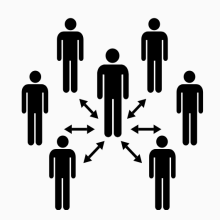The global COVID-19 pandemic closed schools around the world, leaving more than 1.6 billion children out of school in the early months of the pandemic. According to a recent UNICEF calculation, around 214 million children – or 1 in 7 globally – have missed more than three-quarters of their in-person learning. The learning loss associated with these school closures is predicted to cost the equivalent of $10 trillion in these children’s future earnings.
Presently schools in 141 countries have reopened for some in-person instruction, but students in two-thirds of countries are not fully back in school. While some countries have been able to organize remote instruction, children learn more when they are in school. Schools also provide a place for many students to interact with their peers, receive nutritious meals and vaccinations, and get psychosocial support. A return to in-person operations in the middle of a global health pandemic, however, will require considerations of both what is in the best interests of students and teachers, as well as the risks to public health.
To aid in reopening schools and stemming learning losses, UNICEF, UNESCO, the World Bank, the World Food Programme, and the UN Refugee Agency (UNHCR) published a joint framework for reopening schools that provides high-level guidance around safe operations, stemming learning loss, ensuring the wellbeing of students and teachers, and reaching the most marginalized children.
How exactly should countries implement these recommendations? How can they move from high-level guidance to specific investments and activities? How much will these additional activities cost and which specific resources will be required? Is there any evidence on the effectiveness of approaches that countries and education systems have been using to support children’s learning inside and outside of school?
To tackle these sorts of questions, the World Bank’s Education Global Practice has (i) created short notes to curate evidence and examples and provide links to materials that countries have used to support various stakeholders (students, teachers, parents, school management) during both remote and in-person instruction, (ii) developed excel-based costing tools to identify the resources required for delivering remote instruction, including social-emotional learning, and for implementing the activities implied by the joint framework, and (iii) invested in randomized control trials around the world to test different approaches that employ digital technologies to support learning at home or to assist educators in the classroom.
The short notes are meant to be “living documents” that offer a start point for implementing recommendations related to health and safety, modifications that might be required in education systems’ pedagogical approach to get children back to learning, and the management of all these activities.
Health and Safety
Is it safe to reopen schools? (English | French | Spanish)
School reopening decisions should reflect evidence-based estimates of the risks associated with reopening and the risks associated with school closures. Experiences from countries around the world where schools have reopened suggest that with adequate mitigation strategies, schools pose low risk for disease transmission for students, teachers, and communities. Available evidence suggests that children are both less likely to get COVID-19 and less likely to transmit the disease to others. Transmission within school has been low, particularly for preprimary and primary schools, and teachers are more likely to get the virus from other staff, not from students. Given the safe reopening experiences in countries prior to vaccine development, often in the midst of high community transmission, education systems do not need to wait for widespread vaccination for teachers or other adults in the community before reopening, although prioritizing teachers for vaccination may allay their fears of returning to classrooms for in-person instruction. Keeping schools closed will eliminate the risk of disease transmission happening at school but may also imperil children’s learning and psychosocial health.
Minimizing disease transmission in schools (English | French | Spanish)
While it is not possible to completely eliminate the risk of disease transmission in schools, evidence from reopened schools indicates that simple mitigation measures like masking, social distancing, and ventilation are effective in substantially reducing transmission to students and teachers. While community transmission remains high, schools can also halt or modify non-instructional activities that contribute to disease transmission. While universal testing may not be necessary, schools should have protocols for isolating cases, tracing their contacts, and quarantining exposed individuals. Given that children are less likely to transmit COVID-19 than adults and given that most documented school-based transmission has occurred among staff, schools and the broader education system should promote a culture of adopting mitigation measures inside and outside school.
Modifying pedagogy
Restructuring the academic calendar (English | French | Spanish)
The calendars for the 2019/2020 and 2020/2021 academic years were heavily disrupted in most countries due to the COVID-19 pandemic, raising questions of how to approach the schedule for the current and upcoming school calendars to make up for lost learning and to support student well-being. Potential options for generating more instructional time include extending the school day, week, or year. Alternatively, countries may want to consider an “intersessional” calendar, which creates space to recover should future shutdowns be required.
Adapting the curriculum (English | French | Spanish)
Even before the pandemic, most national curriculums were characterized for being overambitious, designed for ideal teachers and students, ignoring the realities on the ground. Covid-19 has exacerbated this problem by further reducing instructional time students receive. Given this, countries should consider condensing the curriculum to focus on core subjects and fundamental competencies within those subjects. They can also help teachers by providing detail lesson plans. Lockdowns and confinements have also increased children’s stress and depression, highlighting the importance of incorporating social-emotional learning into the curriculum. Countries can add certain social emotional competencies that will help students cope and thrive in this new world.
Encouraging re-enrollment (English | French | Spanish)
Following the widespread school shutdowns, many countries will find it challenging to ensure that all students return to school. Vulnerable populations, such as girls and refugees, will likely take even more effort to re-enroll. Countries can encourage re-enrollment through offering financial and practical assistance to students, carefully monitoring the re-enrollment process, including women and girls in decision-making, re-evaluating policies that may result in inequity, and individually supporting the most at-risk students.
Preparing and supporting teachers (English | French | Spanish)
The pandemic has challenged education systems to ensure learning continuity, substantially increasing the demands placed on teachers and increasing the complexity of their job. Countries need to re-engage with teachers and help improve their wellbeing to improve their effectiveness. Countries also need to provide teachers with concrete guidance on identifying children at risk of dropping out and enforcing health protocols. Finally, teachers should benefit from high quality professional development and ongoing support to: (i) re-engage with students, (ii) assess student learning (iii) implement a revised curriculum using appropriate pedagogy, and (iv) improve their digital skills
Supporting learning at home (English | French | Spanish)
Remote instruction during times of school closures has taken many forms, from distributing study packets to students’ homes to real-time instruction through online platforms. All of these approaches to support learning at home can continue after schools reopen to mitigate learning losses. Many countries and organizations have already developed resources to support children’s learning at home and to help parents support them during lockdowns that other countries can license or use for free, eliminating the need to build everything from scratch. Given that schools in many countries played an important role in protecting child safety by referring vulnerable students to social services, school closures may have exposed these students to increased abuse and neglect that has gone undetected.
Learning assessment and exams (English | French | Spanish)
At the time of reopening and throughout the school year, learning assessments help teachers, schools, and education systems identify learning needs so that they can adjust instruction and target resources accordingly to stem learning losses induced by school closures and economic shocks accompanying the pandemic. These assessments should focus on students in early grades or transition years and start with covering the content missed during closures from core subjects like reading and math. To ensure safety and to give every child an equal opportunity to demonstrate what they know, understand, and can do, education systems can modify or replace high stakes examinations that certify school completion or determine transitions to higher levels of education.
Accelerating Learning Recovery (English | French | Spanish)
Remedial action to accelerate the recovery of learning loss should be an essential element of national COVID-19 response education strategies. Given that the extent of learning loss is likely to vary across individual students, it will be even more important to help students catch up to grade-level standards by teaching at the right level. National tutoring programs, individualized self-learning programs, and computer-assisted instruction have also been found to improve student learning in various contexts. Summer school may be expanded to accommodate additional students and can be effective if combined with the “teaching at the right level” approach. Grade retention by itself has limited effectiveness as a remediation strategy unless combined with other targeted interventions.
Management
Preparing and supporting school leaders (English | French | Spanish)
School administrators have taken on a significant amount of additional responsibility since the beginning of the pandemic. They have needed to rewrite policies, communicate with stakeholders, institute distance learning programs, and otherwise engage in crisis management on a regular basis. Countries can empower their school leaders by communicating clearly, giving resources for creating school reopening plans, encouraging collaboration among schools, and helping schools monitor reopening progress.
Communicating with stakeholders (English | French | Spanish)
Communication has emerged as a key element of effective an COVID response policy as school systems have managed school closures and re-openings over the course of the year. This note summarizes good practice on how to communicate and what to communicate. The major principles include communicating early and often using multiple channels, localizing communication efforts to involve community leaders, and ensuring inclusivity in messaging through the use of multiple languages and non-written modes. In addition to communications around health and safety, communicating to encourage learning continuity has been found to be effective at improving achievement (in pre-COVID settings). Opening feedback channels to hear from parents is equally important for planning ahead.











